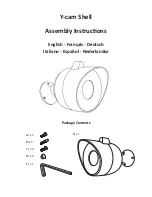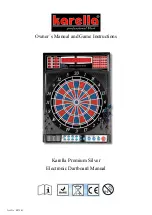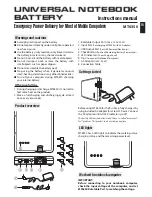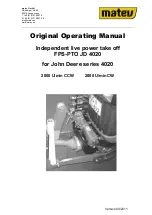
D-31 June 2002
5
Water Protection
Film records should be protected from possible
water damage, such as from leaks, fire-sprinkler
discharge, and flooding. If possible, storage
facilities should be located above basement
levels. Storage cabinets should be raised so that
the lowest shelf or drawer is at least 15.2 cm
(6 in.) off the floor and should be constructed so
that water cannot splash through ventilating
louvers onto the records. Drains provided should
have adequate capacity to keep water from a
sprinkler discharge from reaching a depth of
7.6 cm (3 in.).
If the record-storage area should become flooded,
prompt steps should be taken to reclaim any
immersed records. Allowing microfilm records
to dry, even partially, will cause the layers to
stick together. If there are no local facilities for
rewashing and drying the films immediately,
promptly place the films in a water-filled container
and send them to a laboratory where they can be
washed and dried properly.
10
Effects of High and Low
Relative Humidities
The choice of humidity level for storage depends
on the type of photographic film and the humidity
of the work area. In order to minimize subsequent
moisture conditioning in storage, the humidity of
the work area should not be markedly different
from that of the storage area. Very large humidity
differences may lead to some physical distortion.
The best relative humidity for storage is the
lowest that can be achieved practically and
controlled reliably, within the limits specified
in ANSI/PIMA IT9.11-1998 and ISO 18911
5
or
their latest revisions.
High Humidity
Storage in moist air, such as that frequently found
in basement rooms, and storage humidities above
50% should be avoided; relative humidities of
40% or less are recommended for minimizing the
possibility of growth of microscopic blemishes.
At humidities above 60%, there is the additional
danger of fungus growth.
These curves show the relationship between relative
humidity and the moisture content of a typical emulsion,
triacetate film base, Estar Base, and a complete film at
equilibrium of various relative humidities at 21°C (70°F).
Low Humidity
At low humidities, problems of brittleness or
static might arise if the films are to be handled
frequently. However, in the case of inactive
films (regardless of their intended permanence),
the increased protection that low humidity gives
against microscopic blemishes might be
desirable. The recommended humidity is
30% for silver-gelatin polyester-base film and
15% for silver-gelatin acetate-base film and all
other silver and non-silver films.
5








































